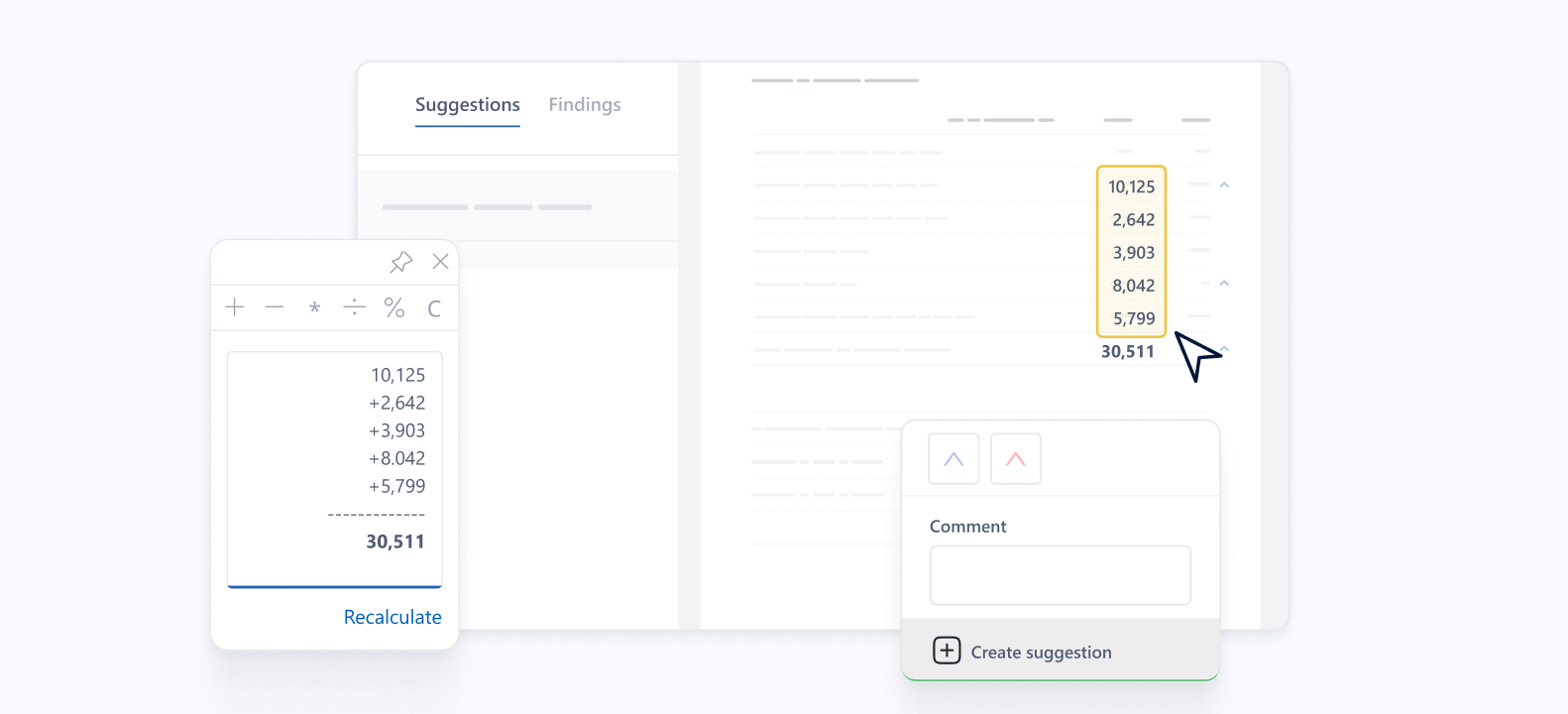An income statement shows whether a business made a profit or loss over a specific period. It reports earnings, expenses, and the result of those operations. This guide explains what an income statement includes, how to read it, and why it matters.
What Is an Income Statement?
An income statement is a financial report. It shows how much money a company earned, how much it spent, and whether it gained or lost money during a set time, usually a month, quarter, or year. It does not show actual cash flow. That is the job of the cash flow statement.
DataSnipper’s Financial Statement Suite can help auditors handle income statements by automating accuracy checks, internal consistency, and version comparisons, all within Excel.

Components of an Income Statement
The income statement has important parts that show how well a company is doing financially. These parts include revenue, cost of goods sold (COGS), gross profit, operating expenses, operating income, interest and taxes, and net income.
Knowing what each part means helps you understand the income statement better and make smart financial choices.
Interpreting an Income Statement
Understanding an income statement involves examining its components and their implications for a company's financial standing.
Revenue, also known as sales, represents the income generated from the company's primary operations. It sits at the top of the income statement, indicating the total amount earned.
The cost of goods sold (COGS) reflects the direct expenses associated with producing the company's goods or services. Deducting COGS from revenue yields the gross profit, illustrating the company's effectiveness in manufacturing and selling its products.
Operating Expenses and Income
Operating expenses are the costs of keeping the business running, like salaries, rent, utilities, and depreciation, not including the cost of making the products or services.
When you take these expenses away from the gross profit, you get the operating income. This shows how well the company is doing with its main business activities.
Interest, Taxes, and Net Income
Interest and taxes are the costs of borrowing money and following legal rules. Once we've taken care of these expenses, we get the net income, also called the bottom line.
It's the final profit or loss after we've accounted for all the money coming in and all the expenses going out. Net income gives a clear idea of how well the company is doing financially and is usually the number that investors and others pay the most attention to.
Importance of an Income Statement
For Investors
Investors look at income statements to see if the business is profitable. They track revenue growth, cost control, and bottom-line results. Flat or falling profits raise concerns. Consistent earnings build confidence.
For Creditors
Creditors check income statements to judge whether a company can pay back what it owes. Strong profits suggest reliability. Weak or negative results signal risk.
For Management
Management uses the income statement to evaluate operations. They measure how much the business earns, where money is going, and which areas need adjustment. The numbers guide budget cuts, hiring, pricing, and investment.
For Analysts and Regulators
Analysts study income statements to evaluate financial performance. Regulators review them for accounting accuracy and reporting standards. The data shapes public perception and stock market reaction.
Final Thought
The income statement shows financial results. DataSnipper improves the accuracy, speed, and quality of financial reporting. For audit and finance teams, that means more confidence, less risk, and more time to focus on what matters.
FAQ
What workflows does DataSnipper cover?
It supports audit, tax, financial control, advisory, and transfer‑pricing procedures via tools like Financial Statement Suite, Advanced Extraction, UpLink, and DocuMine.
Can DataSnipper validate income statement math?
Yes. It highlights incorrect totals, suggests corrections, and applies tick marks directly in Excel.
How does Datasnipper pricing work?
Three tiered plans suit different team sizes and use cases. Enterprise offers advanced features and support.
How do I quantify ROI if I consider Datasnipper?
The ROI calculator estimates time savings in your use case. Users report up to 94% efficiency gains
Can I see Datasnipper before buying?
Yes. Book a demo for live walkthroughs and custom pricing.





















